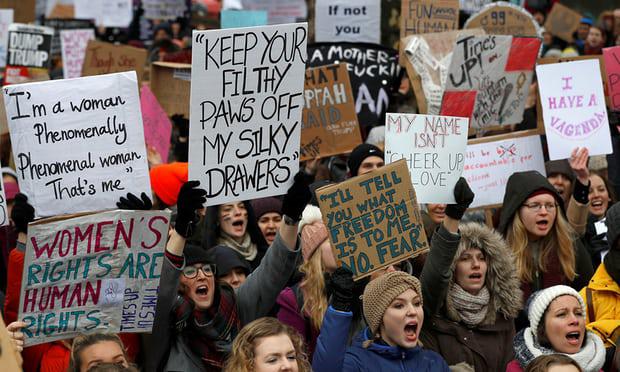|
One in five women have been sexually assaulted, analysis finds
By Alan Travis
Official analysis from latest Crime Survey of England and Wales lays bare extent of problem One in five women in England and Wales have experienced some type of sexual assault since the age of 16, according to official analysis of violent crime figures. The latest release of findings from the Crime Survey for England and Wales shows more than 510,000 women – an estimated 3.1% of all women aged 16 to 59 – experienced some type of sexual assault in the past year. The figures show women are five times more likely than men to have experienced some type of sexual assault, including unwanted touching or indecent exposure, in the previous 12 months. The Office for National Statistics said the scale of sexual assaults against women, as measured by the crime survey, had changed little since 2005. More than 80% of victims did not report their experiences to police, the ONS said. The annual ONS focus on violent crime shows deaths from knife crime among people aged 16 to 24 at a nine-year high, with 61 fatal stabbings in the year to March 2017 – the highest figure since 2008-9. They also show an estimated 4.3 million women (26%) and 2.4 million men (15%) have experienced some form of domestic abuse since the age of 16. An estimated 1.2 million women (7.5%) and 713,000 men (4.3%) experienced some form of domestic abuse in the past year. The detailed ONS analysis estimates that more than 443,000 women experienced at least one sexual assault involving indecent exposure or unwanted touching in the 12 months to March 2017. An estimated 144,000 experienced rape or an attempted rape or assault by penetration. The crime survey findings show an estimated 138,000 men experienced some type of sexual assault in the past year and 646,000 have experienced some type of sexual assault since they were 16. The vast majority of these involved unwanted touching or indecent exposure rather than rape or assault by penetration. The figures, which come after a string of allegations against Harvey Weinstein and others, show women are overwhelmingly the victims of sexual assault. Less than 4% of men have experienced sexual assault in their adult lives, meaning women are five times more likely to have experienced it. The police-recorded crime figures show 121,187 sexual offences were reported in the year to March 2017. This represents a 14% increase in the number of sexual offences recorded by police, which the ONS said is partly due to improved recording. There remains a high level of under-reporting. The ONS said the crime survey is its preferred measure of trends in the prevalence of violent crime as it is unaffected by changes in police practices, recording practices or the willingness of victims to report attacks. It said the estimated number of crime survey violent crime incidents was 1.2m in the year ending March 2017, which showed no statistically significant change from the previous year. However, the police-recorded homicide figures, which are covered by the crime survey, show a continuing underlying rise of 8% to 709 killings. Half of all female homicide victims – 82 women – were killed by their partners or ex-partners, the figures show, while 3% of male victims were killed by their partner or a former partner. John Flatley from the ONS said : “The data shows the complexity of measuring crime in all its different forms. Even offences under the heading of ‘violence’ vary enormously, from minor assaults such as pushing and shoving, to homicide. We need to be careful that our perceptions and understanding of crime levels are shaped by appropriate data, and not overgeneralised.” The two sources of figures are the Crime Survey for England and Wales and police-recorded crime data. The ONS said the two sources can sometimes suggest differing trends, so care needs to be used when drawing conclusions.
|
.
Any original material on these pages is copyright © BishopAccountability.org 2004. Reproduce freely with attribution.
